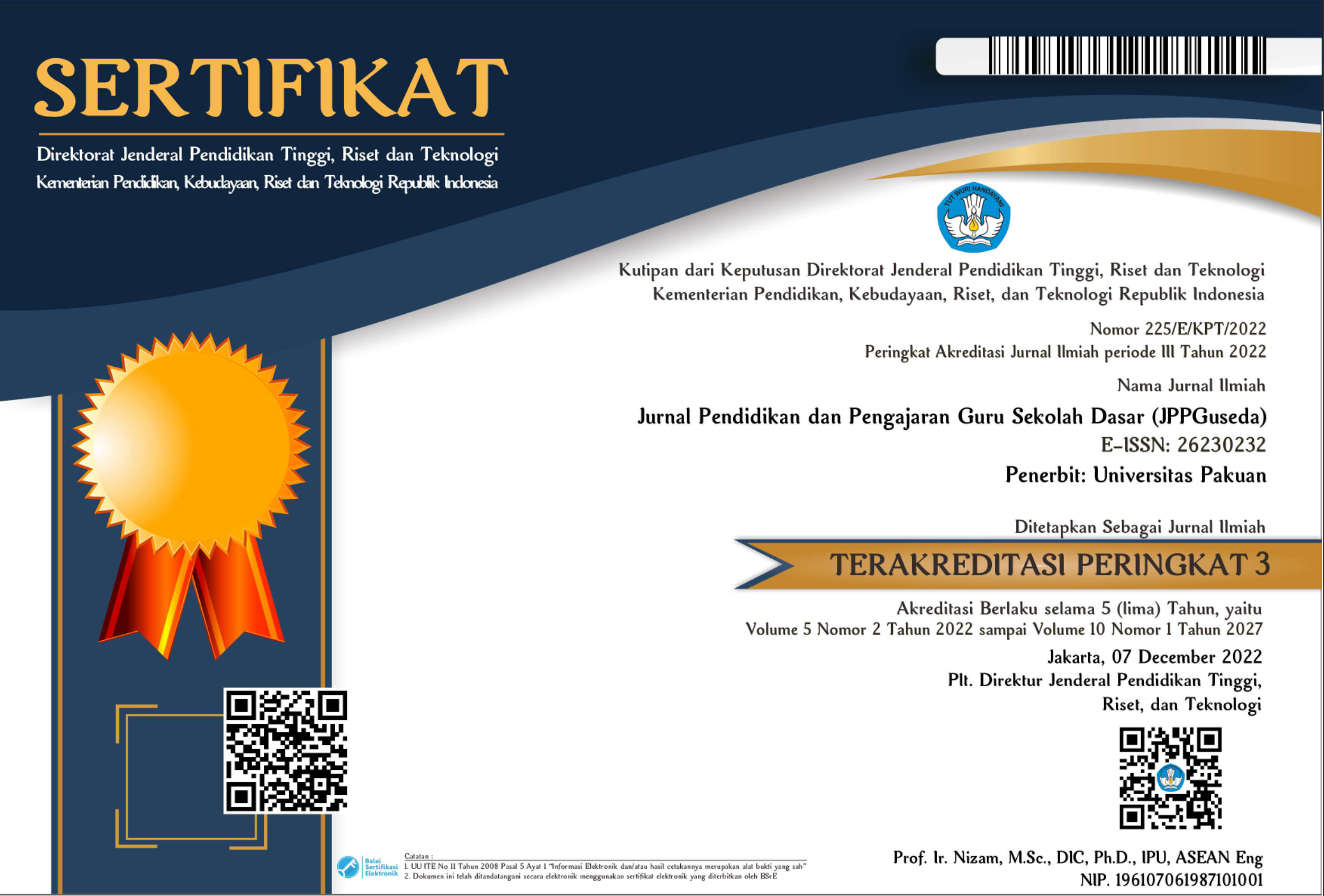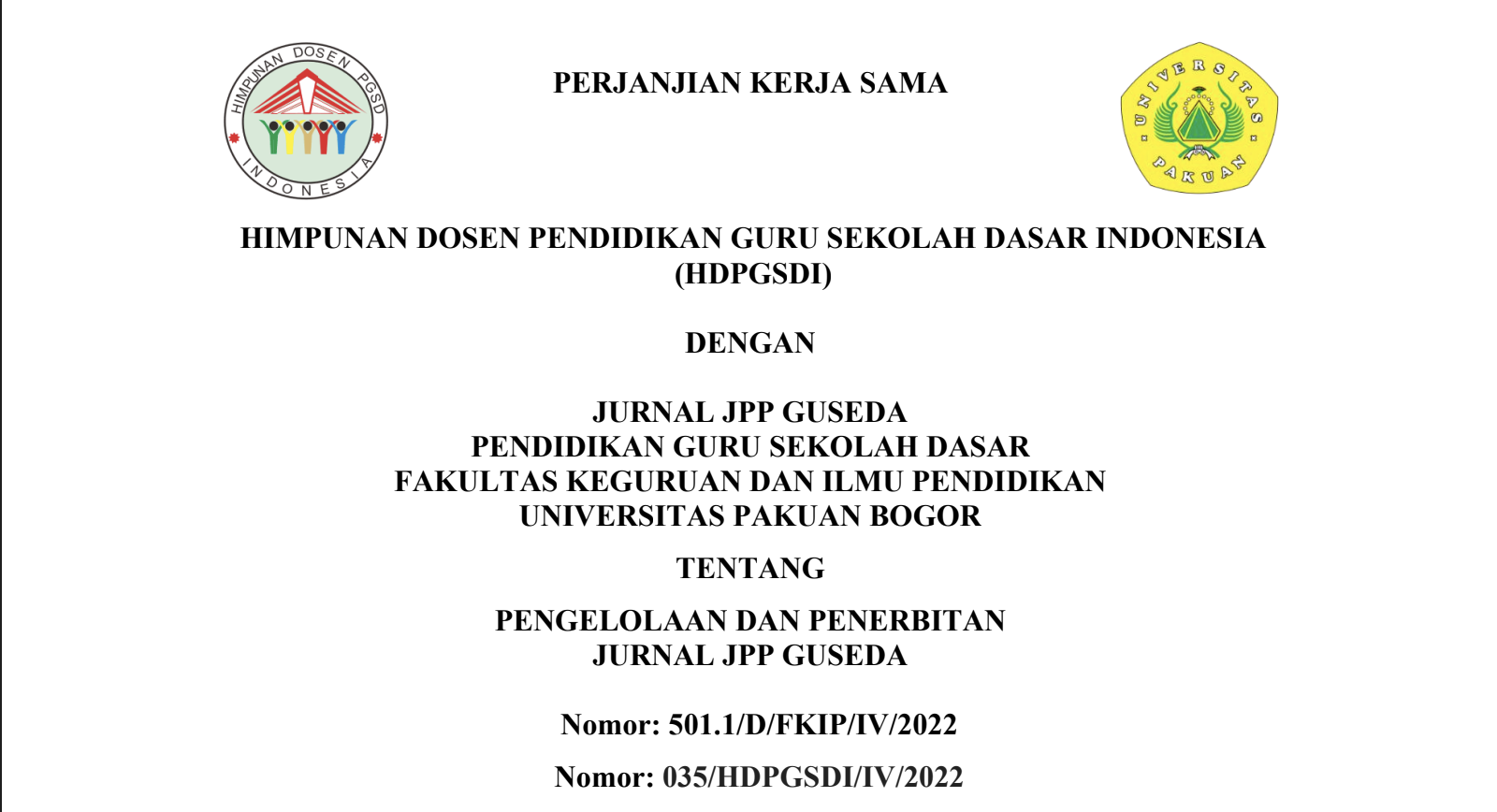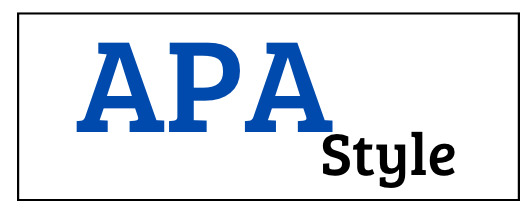Can Virtual Reality (VR) stimulate elementary school students' interest in learning?
Abstract
Keywords
References
Abdillah, F., Riyana, C., & Alinawati, M. (2018). Pengaruh Penggunaan Media Virtual Reality Terhadap Kemampuan Analisis Siswa Pada Pembelajaran Ilmu Pengetahuan Alam Kelas VIII Sekolah Menengah Pertama. In EDUTCEHNOLOGIA (Vol. 2, Issue 1).
Abulrub, A.-H. G., Attridge, A., & Williams, M. A. (2011). International journal of emerging technologies in learning. International Journal of Emerging Technologies in Learning (IJET), 6(4), 4–11. http://online-journals.org/i-jet/article/view/1766
Akman, E., & Çakır, R. (2023). The effect of educational virtual reality game on primary school students’ achievement and engagement in mathematics. Interactive Learning Environments, 31(3), 1467–1484. https://doi.org/10.1080/10494820.2020.1841800
Astuti, W., Mahfuzin, Y., & Hidayat, M. T. (2023). BEKTI: Jurnal Pengabdian Kepada Masyarakat Training Literasi Digital Bagi Guru TK Holistik Amanah Semarang Timur ARTICLE INFO ABSTRACT. https://doi.org/10.56480/bekti.v1n2.865
Cao, M., Feng, Y., & Feng, Y. (2019). Research on the Consumers Purchase Demand of VR Equipment in Chinese Market. 322(Iserss), 579–582. https://doi.org/10.2991/iserss-19.2019.38
Chen, C. J., Toh, S. C., & Wan Ismail, W. M. F. (2005). Are learning styles relevant to virtual reality? Journal of Research on Technology in Education, 38(2), 123–141. https://doi.org/10.1080/15391523.2005.10782453
Darojat, M. A., Ulfa, S., & Wedi, A. (2022). Pengembangan Virtual Reality Sebagai Media Pembelajaran Sistem Tata Surya. JKTP: Jurnal Kajian Teknologi Pendidikan, 5(1), 91–99. https://doi.org/10.17977/um038v5i12022p091
Demitriadou, E., Stavroulia, K. E., & Lanitis, A. (2020). Comparative evaluation of virtual and augmented reality for teaching mathematics in primary education. Education and Information Technologies, 25(1), 381–401. https://doi.org/10.1007/s10639-019-09973-5
Dian Rahmanu, I. W. E., Artha Adnyana, I. B., Laksana, I. P. Y., Sutarma, I. G. P., Omawati, N. P. S., & Adi Nugroho, I. M. R. (2023a). Investigating the Implementation of Multimodality and Spherical Video-Based Immersive Virtual Reality in the Indonesian Language for Foreign Speakers’ Learning Materials. Theory and Practice in Language Studies, 13(7), 1760–1768. https://doi.org/10.17507/tpls.1307.20
Dian Rahmanu, I. W. E., Artha Adnyana, I. B., Laksana, I. P. Y., Sutarma, I. G. P., Omawati, N. P. S., & Adi Nugroho, I. M. R. (2023b). Investigating the Implementation of Multimodality and Spherical Video-Based Immersive Virtual Reality in the Indonesian Language for Foreign Speakers’ Learning Materials. Theory and Practice in Language Studies, 13(7), 1760–1768. https://doi.org/10.17507/tpls.1307.20
Endarto, I. A., & Martadi. (2022). Analisis Potensi Implementasi Metaverse Pada Media Edukasi Interaktif. Jurnal Barik, 4(1), 37–51. https://ejournal.unesa.ac.id/index.php/JDKV/
Ernawati, A., Sitorus, Z., Farta Wijaya, R., Aulia, A., Risky Yuliansyah Siregar, A., &
Nurhaliza Sofyan, S. (2024). Pemanfaatan Teknologi Virtual Reality (VR) Dalam Pembelajaran Pada Lembaga Kursus Dan Pelatihan Rumah Tik Labuhanbatu. Jurnal Pengabdian Masyarakat Gemilang (JPMG), 4. https://doi.org/10.58369/jpmg.v2i4.152
Finy Fitriani. (2021). Analisis Penilaian Pembelajaran Berbasis Teknologi Informasi dan Implikasinya Terhadap Peningkatan Kualitas Pendidikan SD/MI. Genderang Asa: Journal of Primary Education, 2(2), 30–42. https://doi.org/10.47766/ga.v2i2.152
Han, S., & Resta, P. E. (2020). Virtually authentic: Graduate students’ perspective changes toward authentic learning while collaborating in a virtual world. Online Learning Journal, 24(4), 5–27. https://doi.org/10.24059/olj.v24i4.2326
Herlangga, Saharuddin, & Haedar. (2015). Pengaruh Lingkungan Kerja dan Masa Kerja Terhadap Kepuasan Karyawan Pada PT. Hadji Kalla Palopo. 2015.
Jamal, A. B., Abduh, M., & Lestari, S. (2024). Penerapan Model Problem Based Learning Berbantuan Powerpoint untuk Meningkatkan Motivasi Belajar Kelas 2 SD. FONDATIA, 8(2), 305–315. https://doi.org/10.36088/fondatia.v8i2.4730
Jensen, L., & Konradsen, F. (2018). A review of the use of virtual reality head-mounted displays in education and training. Education and Information Technologies, 23(4), 1515–1529. https://doi.org/10.1007/s10639-017-9676-0
Jin, Q., Liu, Y., Yarosh, S., Han, B., & Qian, F. (2022, April 29). How Will VR Enter University Classrooms? Multi-stakeholders Investigation of VR in Higher Education. Conference on Human Factors in Computing Systems - Proceedings. https://doi.org/10.1145/3491102.3517542
Kartika Dewi. (2020). Pemanfaatan Media 3 Dimensi Berbasis Virtual Reality Untuk Meningkatkan Minat dan Hasil Belajar IPA Siswa Kelas V SD.
Lv, Z., Li, X., & Li, W. (2017). Virtual reality geographical interactive scene semantics research for immersive geography learning. Neurocomputing, 254, 71–78. https://doi.org/10.1016/j.neucom.2016.07.078
Makransky, G., Terkildsen, T. S., & Mayer, R. E. (2019). Adding immersive virtual reality to a science lab simulation causes more presence but less learning. Learning and Instruction, 60(May 2017), 225–236. https://doi.org/10.1016/j.learninstruc.2017.12.007
Mambu, J. Y., Wahyudi, A. K., & Hezky, G. (2019). “Jump”: Game Simulasi Olahraga Berbasis Virtual Reality Dengan Sensor Accelerometer. Nutrix Journal, 3(2), 58. https://doi.org/10.37771/nj.vol3.iss2.408
Merchant, Z., Goetz, E. T., Cifuentes, L., Keeney-Kennicutt, W., & Davis, T. J. (2014). Effectiveness of virtual reality-based instruction on students’ learning outcomes in K-12 and higher education: A meta-analysis. Computers and Education, 70, 29–40. https://doi.org/10.1016/j.compedu.2013.07.033
Parong, J., & Mayer, R. E. (2018). Learning Science in Immersive Virtual Reality. Journal of Educational Psychology, 110, 785-797. https://doi.org/10.1037/edu0000241
Pertiwi, R., & Sutama, S. (2020). Membudayakan Kelas Digital Untuk Membimbing Siswa dalam Pembelajaran di Tengah Pandemi Covid-19. JKTP: Jurnal Kajian Teknologi Pendidikan, 3(4), 350–365. https://doi.org/10.17977/um038v3i42020p350
Ponidi, & Murhadi. (2020). Digitalisasi Sekolah Melalui Pengembangan Website dan Layanan Sekolah Berbasis Teknologi Informasi.
Radianti, J., Majchrzak, T. A., Fromm, J., & Wohlgenannt, I. (2020). A systematic review of immersive virtual reality applications for higher education: Design elements, lessons learned, and research agenda. Computers and Education, 147. https://doi.org/10.1016/j.compedu.2019.103778
Rahmanu, I. W. E. D., Sutarma, I. G. P., Laksana, I. P. Y., Somawati, N. P., Adnyana, I. B. A., & Nugroho, I. M. R. A. (2022). Spherical Video-Based Immersive Virtual Reality (SV-IVR) Engagement Towards the Foreigners’ Behavioral Intention to Learn Indonesian Language. In Proceedings of the International Conference on Applied Science and Technology on Social Science 2022 (iCAST-SS 2022) (pp. 109–113). Atlantis Press SARL. https://doi.org/10.2991/978-2-494069-83-1_20
Roussos, M. (1997). Issues in the Design and Evaluation of a Virtual Reality Learning Environment.
sudaryono. (2012). 978-979-756-873-3-889.
Waljinah, S., Prayitno, H. J., Purnomo, E., Rufiah, A., & Kustanti, W. (2019). Tindak Tutur Direktif Wacana Berita Online: Kajian Media Pembelajaran Berbasis Teknologi Digital.
Widhayanti, A., & Abduh, M. (2021). Peningkatan Motivasi Belajar Melalui Media Audiovisual Berbantuan Power Point Pada Peserta Didik Di Sekolah Dasar. EDUKATIF : JURNAL ILMU PENDIDIKAN, 3(4), 1587–1593. https://doi.org/10.31004/edukatif.v3i4.627
DOI: 10.55215/jppguseda.v8i2.11423
 Abstract views : 180
Abstract views : 180
Refbacks
- There are currently no refbacks.
Copyright (c) 2025 Frisca Anghi Nugraini

This work is licensed under a Creative Commons Attribution-NonCommercial-ShareAlike 4.0 International License.




















